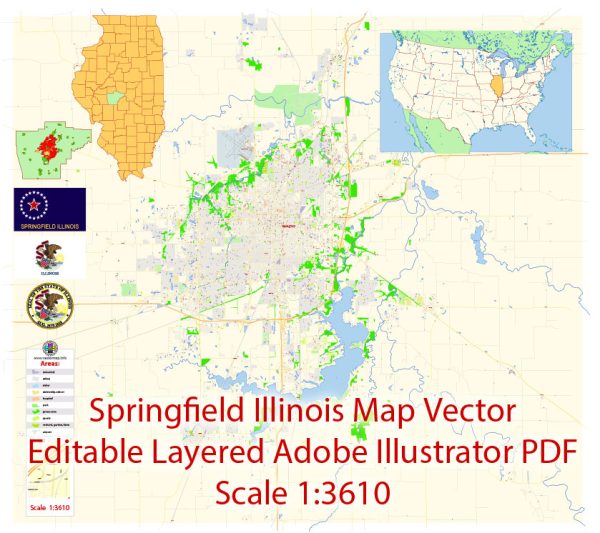A general overview of Springfield, Illinois, in terms of business and economic development.
1. Economy: Springfield, being the capital of Illinois, has a diverse economy with a mix of government, healthcare, education, and manufacturing sectors. The state government is a major employer, given the city’s status as the capital. Additionally, healthcare and education institutions contribute significantly to the local economy.
2. Government and Public Sector: The government sector plays a crucial role in Springfield’s economy due to its status as the state capital. State agencies, government offices, and related services are major contributors to employment and economic activity. This sector is likely to remain stable over time.
3. Healthcare and Education: Springfield is home to several healthcare institutions and educational facilities. These sectors contribute not only to the local economy but also attract a skilled workforce. St. John’s Hospital and the Southern Illinois University School of Medicine are prominent institutions in the city.
4. Manufacturing: The manufacturing sector in Springfield includes industries such as food processing, machinery, and transportation equipment. These industries provide job opportunities and contribute to the economic diversity of the city.
5. Small Business and Entrepreneurship: Like many other cities, Springfield has a presence of small businesses and entrepreneurs across various sectors. Local initiatives and support networks may exist to foster the growth of small businesses.
6. Business Development Initiatives: Springfield, like other cities, may have implemented business-friendly policies and initiatives to attract investment and support economic growth. These could include tax incentives, infrastructure development, and workforce training programs.
7. Challenges: Economic challenges in Springfield might include addressing issues like unemployment, income inequality, and ensuring sustainable growth. Like many cities, Springfield may also face challenges related to economic fluctuations and global economic trends.
8. Community Involvement: Community involvement is crucial for the economic development of any city. Springfield likely has local chambers of commerce, business associations, and community groups working towards fostering collaboration, networking, and supporting local businesses.
To get the most up-to-date and specific information, consider checking with local government sources, economic development organizations, and recent news articles on Springfield’s business and economic landscape.


 Author: Kirill Shrayber, Ph.D.
Author: Kirill Shrayber, Ph.D.